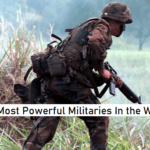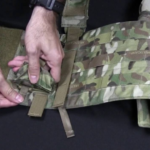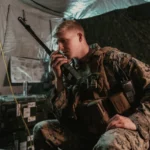A bullet proof vest can be worn by a soldier as a kind of self-defense, protecting him from gunfire and injuries brought on by shrapnel from exploding shells and grenades. During the fighting, this type of defense continues to be the most common.
A military vest can provide different levels of protection. Purchase body armor from the Galls brand which is the most trustworthy and durable on the market. It will help you protect against numerous weapons and preserve your life.

What is the body armor made of?
A bulletproof vest offers a person’s body and most important organs protection against the elements, guns, and fragments of gunfire. The bulletproof vest not only protects you from hostile fire but also gives you the confidence and skill to use your own weapons more audaciously. There are three key components to the bulletproof vest:
- Cover: It is necessary to put protection on oneself even though it has no protective function.
- Bag: It is made of ballistic fabric, which is the first line of defense against injury.
- The second level of defense is a solid plate or tactical plate. The plate may be formed of high-modulus protecting components, polyurethane, metal, or ceramic.
In addition to the essential and obligatory elements of protection, body armor includes other components. They are essential to protect the groin, legs, lower back, shoulders, and other places. There are also other alternatives for furnishings or decorations.
What is the purpose of the bullet vest?
During military operations, body armor’s main function is to protect from fragmentation while allowing for movement. In contrast to what many people believe, the bulk of fatalities is actually brought on by mine and shell fragments.
No matter how much defense you put up, the sniper will still find a weak spot. However, it is far more important to swiftly take shelter if you are being attacked by mortar or artillery fire. Modern military vests for the military give a wide area of protection with soft armor since the lungs and heart are only covered by an armor plate in the middle of the body.
There are several different kinds of firearms; one fires a large, heavy bullet that goes slowly, while the other fires a little, light bullet that moves swiftly. Therefore, a bulletproof vest made to withstand one type of ammunition may not always be able to withstand another.
As a result, there are several types of body armor. Body armor successfully shields the upper body while keeping the integrity of the important organs thanks to the use of the strongest materials. Body armor is frequently made of materials that can scatter energy. The materials that are manufactured the most commonly include ceramic plates, aramid, steel, titanium, and kevlar.
The amount of layers in a body armor vest directly affects its dependability; the more layers, the better. But as protection increases, the ability to move and maneuver expertly, which is no less important in battle, decreases. Because of this, designers of high-quality body armor try to follow the golden mean in this circumstance.
The effectiveness of a vest’s protection improves with the number of layers it has, but the wearer’s ability to move quickly decreases as the weight of the vest rises.
Types and classes of body armor
In total there are 10 classes of body armor: special, 1, 2, 2a, 3, 4, 5, 5a, 6, 6a.
- Bladed weapon protection is provided by a special class.
- In class 2a, hunting firearms are protected.
- Class 1 body armor is the lightest (up to 3 kg) and is made entirely of fabric layers without a plate. Only firearms are resistant to it.
- Class 2 body armor weighs up to 5 kg and features a metal plate in the fabric foundation that shields the most vulnerable areas from 9 mm bullets.
- Class 3 has a metal plate and a lot of cloth layers, weighing between 9 and 11 kg. protects against light small weapons like machine guns and handguns. The flexibility and movement of a warrior are restricted by this body armor.
- Bulletproof vests of Class 4 and above are already more durable and offer effective protection from AKs and other comparable weapons. A thin, sturdy metal plate composed of aluminum or titanium alloys is attached to the fourth-class bulletproof vests.
- Bulletproof vests of class 5 offer the most trustworthy defense against automatic weapons for a combatant. In addition, he controls 62×39 mm caliber, 8 kg-capable rounds launched from Kalashnikov assault rifles. In order to defend against a rare kind of armor-piercing incendiary projectiles, class 5a bulletproof vests are used.
- The class 6 bulletproof vests offer the best injury prevention. Any form of weapon, including sniper rifles and machine guns, does not frighten someone with such protection. Bulletproof vests of the sixth class are used to some extent by special forces in the military and police. These vests include ceramic plates that have been reinforced to withstand several direct hits and are made of modular armor. Despite its weight, the sixth-class bulletproof vest can withstand the shooting of sniper rifles at a distance of 10 meters.
Join 25,000+ smart readers—don’t miss out!





